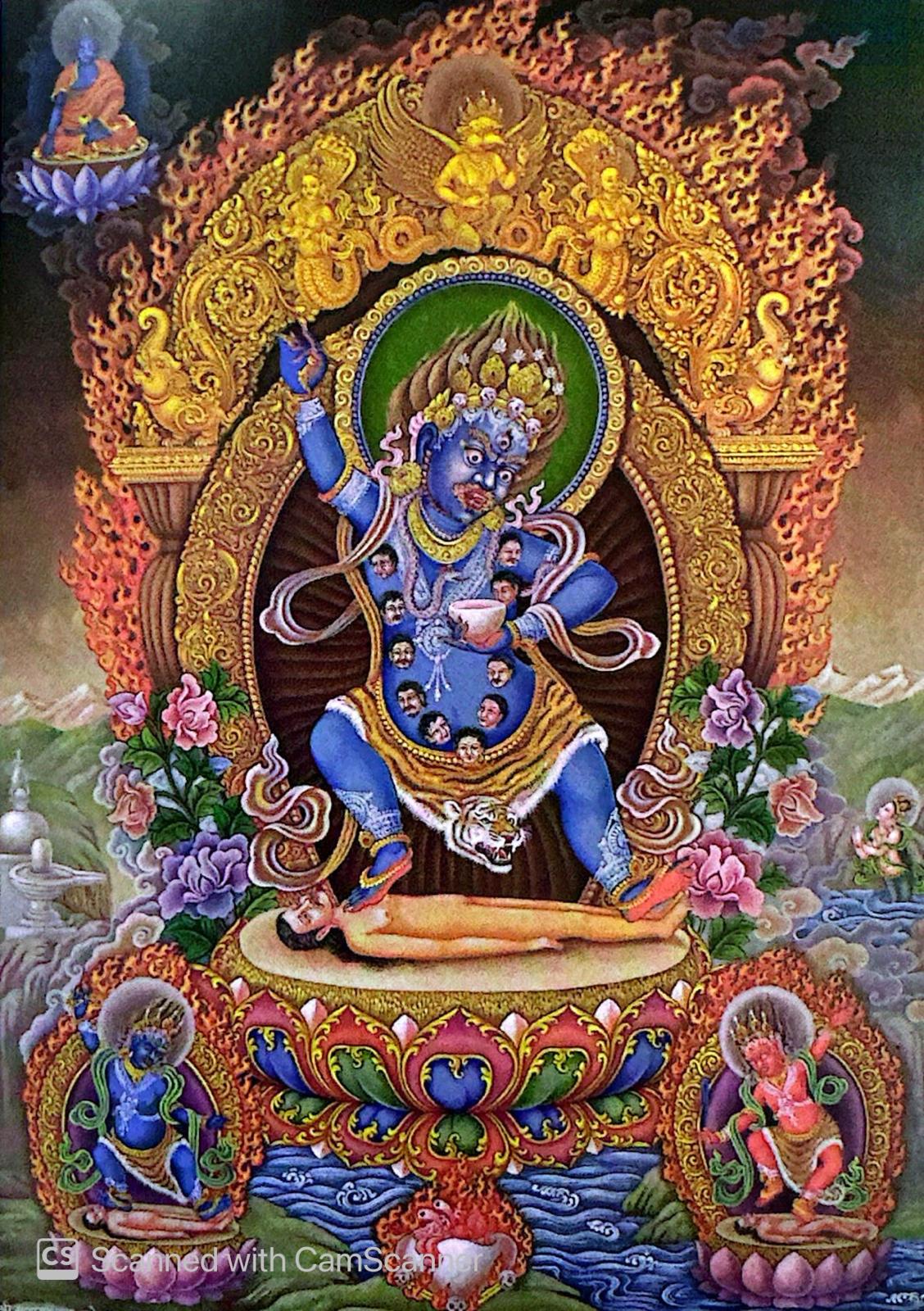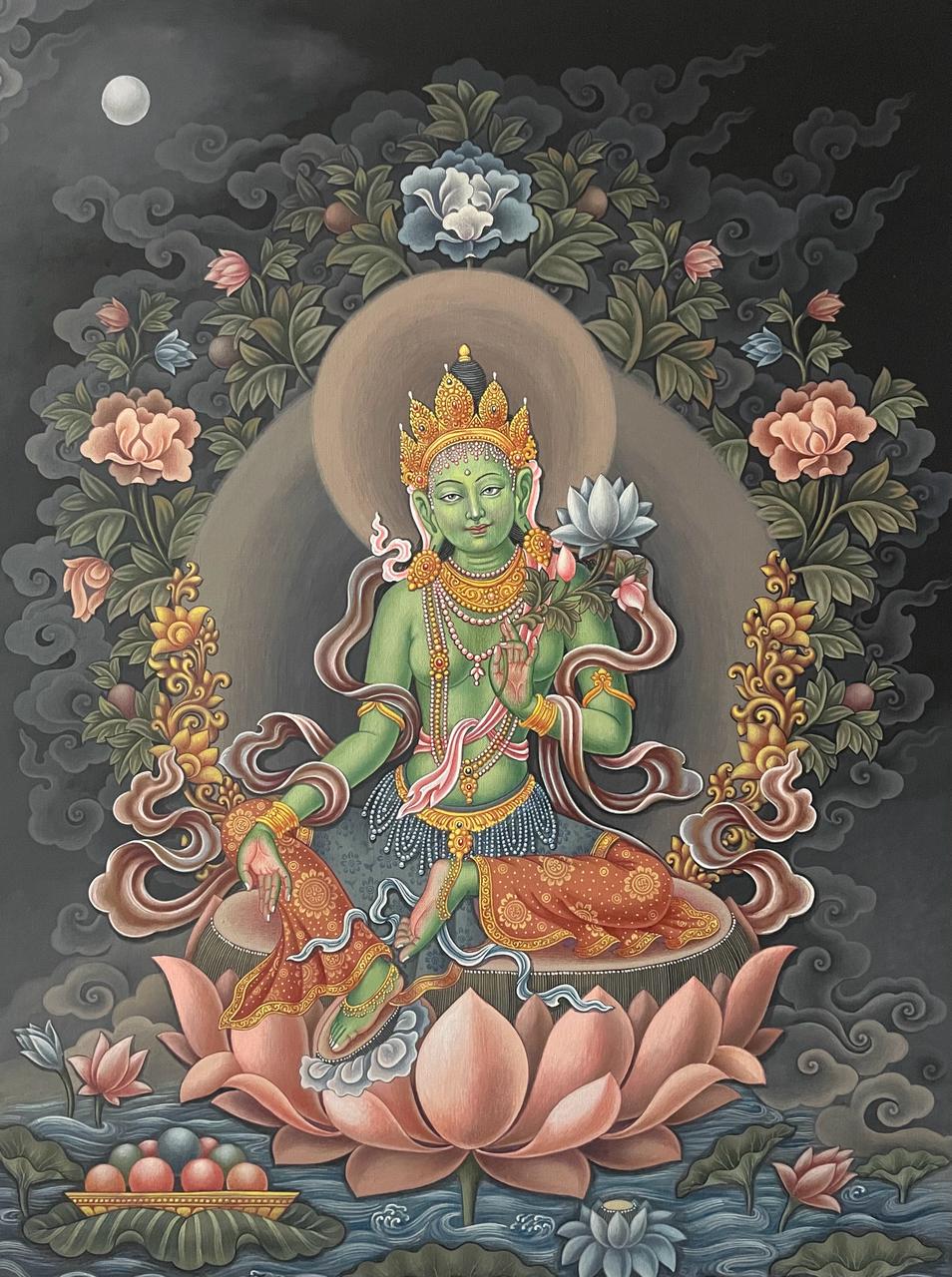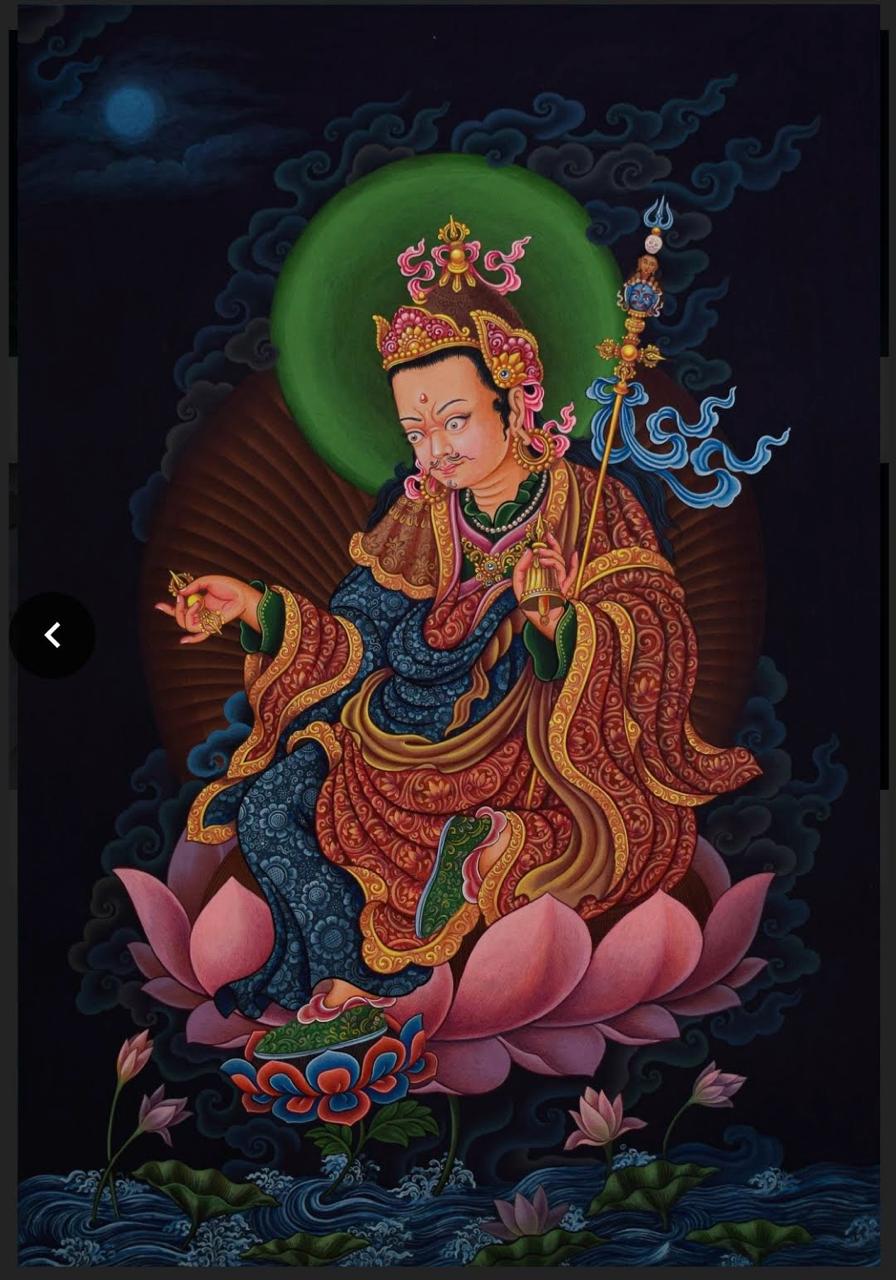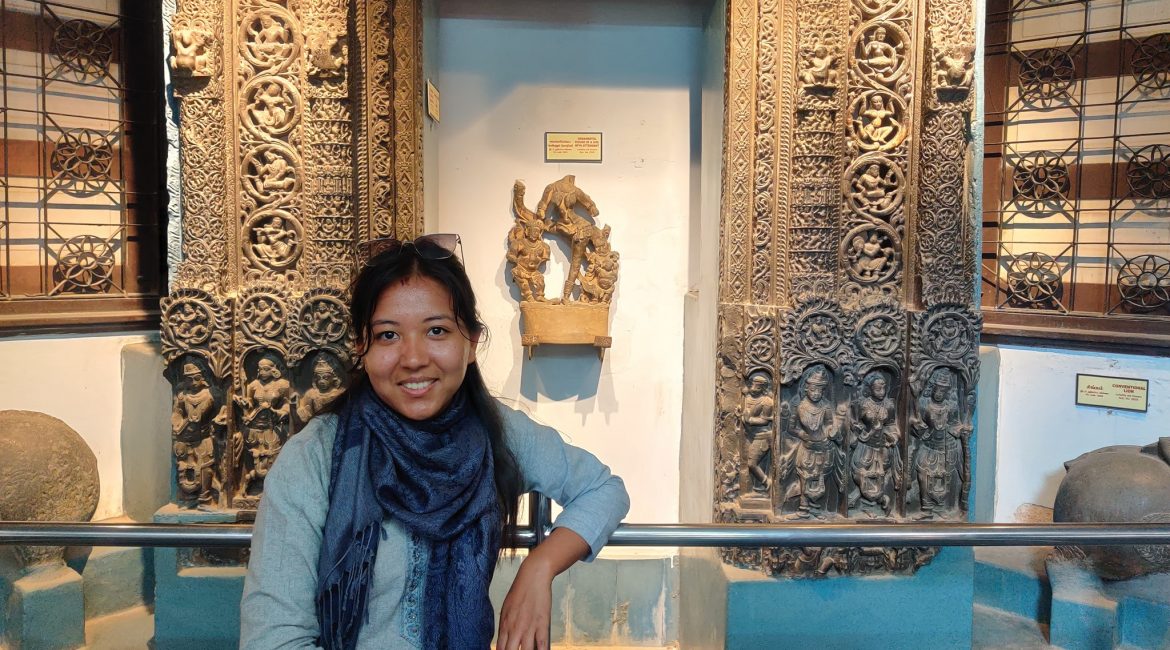One of the most distinctive features of Nepalese paubha art is the maintenance of family ateliers: traditions of unique painting styles that are handed down the generations. Traditionally, these inheritors of painting traditions were men, but Rajani Sinkhwal is unique for learning from her father, Sundar Sinkhwal, and taking up a career in paubha art (which is coming close to a decade). Born in 1997, Rajani is undoubtedly young and talented, and specializes in not only Buddhist and Hindu tantric iconography but also how traditional work can join the ranks of “contemporary” art. She sees herself as representing this dual world of the traditional and the modern, with the former represented by her family background and the latter seen in her Bachelor in Fine Arts.
For the Kathmandu Art Biennale: Spiritual Edition in January this year, she painted a subtly modern paubha representation of Mahakala, the god of time. Mahakala is a core divinity in the tantric tradition, and Rajani’s Mahakala displays all the vitality of a traditional paubha that simultaneously feels somewhat softer and lighter. There is a specific reason: this Mahakala was painted on gouache on cotton canvas, which is not the usual material for Nepalese artists.

“The colors, the backgrounds, all the small things all make artists distinct. The difference between my father’s art from others is that of the coloring – my father works with much subtler and softer colors, and I have been influenced by dad. But obviously, my art is not as mature. My father’s artwork is also more detailed, but as a student of contemporary art, I might be more interested in different mediums,” she told me. “I grew up seeing my parents work very hard on art and their dedication to the paubha inspired me to respect it and understand the patience and meticulousness of producing paubha.”
Exactly ten years ago in 2014, the same year she began learning fine art, she also began making paubha art simultaneously. “Contemporary art is about feelings and intuition and painting what you feel in your heart, while traditional paubha asks you to understand the theoretical and translate it into the practical, including the iconography.” But there is ultimately a complementarity to the two “sub-disciplines.” Learning about lighting, color mixing, and other practical tools for painting fed from training in paubha painting into working on contemporary art, and vice versa.

“I need to emphasize that with January’s biennale, MoNA (The Museum of Nepali Art) did an amazing job curating what was a very deep and difficult thematic matter. There were two different styles that needed two ways of execution. They had the contemporary installations in open spaces, which requires a lot of thought and consideration in regard to the angles, rear and front view, et cetera. The team really did a great job with respecting that need from the contemporary art. Whereas with paubha art, you need to be up close and personal in a frontal manner to understand to see the art’s value and details. They tried their best to give the art the space they demanded. This is on top of all the individual differences in each artist’s production, be they contemporary or traditional.”
The interface of old and new is not only generational, like in the case of Rajani and her father, but also professional, in the sense of artists of both traditional and contemporary styles talking to each other and sharing ideas and techniques. It has led to a merging of paubha painting and contemporary techniques by artists. Rajani notes that this mutual encouragement and absorption is part of the ongoing evolution of Nepalese art as a whole, and why the Nepalest art world is so vibrant and increasingly drawing the eyes of art collectors and aficionados internationally.

“When I heard about the term ‘spirituality’ for MoNA’s biennale, I thought about how we can understand ourselves and achieve inner mastery as well as what’s happening around us. You should enjoy the present, reflect on the past, and look forward to the future,” she said. “These periods are connected and understanding them all helps us to reach ultimate truth. That is why I chose Mahakala, who represents Great Time, and black for his body to represent the great void or emptiness, shunyata.”
Being surrounded by art from such an early age has not blinded Rajani to the fact that art is undergoing significant and broadly helpful changes. The slice of the art market in the pie of Nepali cultural influence is becoming bigger, broader. For the last couple of decades, the “tourist market” of yesteryear gradually developed into a market for exhibitions and galleries, with paubha artists began astutely marketing themselves as creators of locally made (particularly in the Kathmandu Valley) art that represent Nepal internationally. Both native and global buyers’ hunger for Nepali art began to burgeon. The future looks bright, with even schoolchildren and teenagers being taken to exhibits.
“The number of artists has subsequently increased, and overall, I see the situation becoming better and better,” declared Rajani hopefully. As a representative of two artistic worlds that have now become partially one, while both retaining their unique identities, Rajani’s movements through the exciting and constantly vibrant world of Nepali art will be essential watching for lovers and observers of art.
Related news from BDG
Related features from BDG
What I Learned about Nepalese Art after the Kathmandu Art Biennale’s Opening
Related blog posts from BDG
The First Sermon’s Shadow: Nepalese artist Mahima Singh’s “Transcendence through Simplicity”


